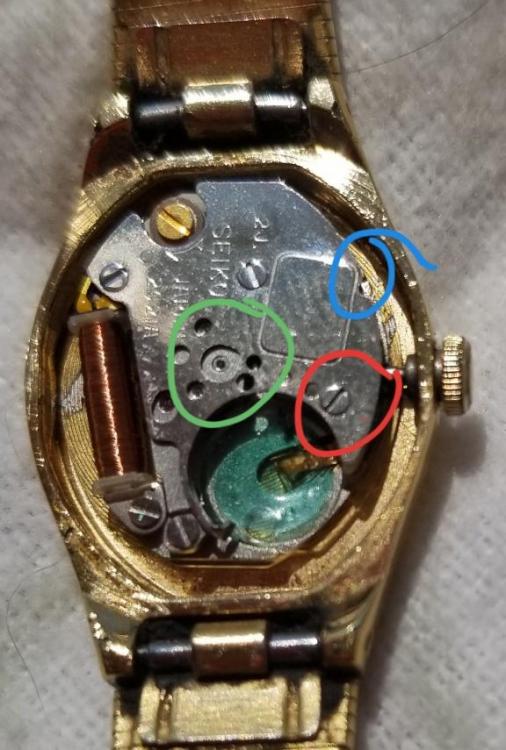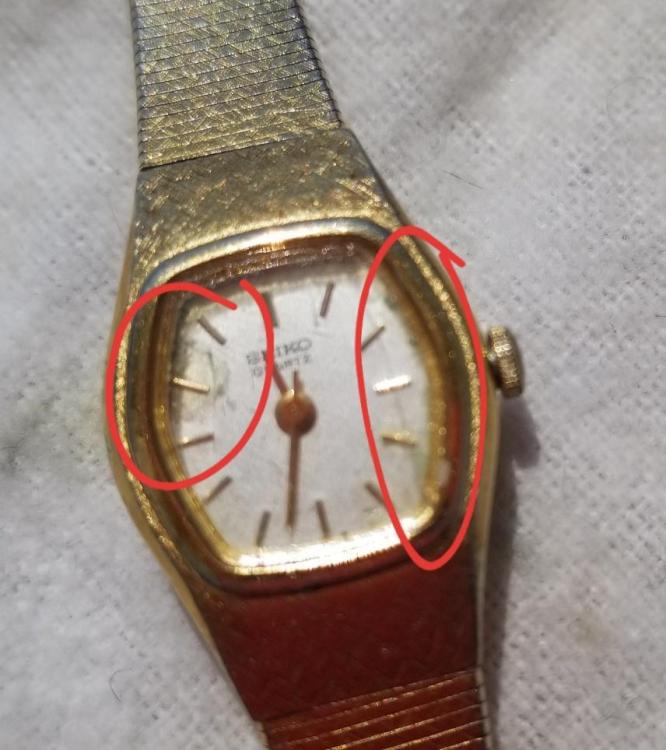Search the Community
Showing results for tags 'remove'.
-
Bergeon Platax No. 2677 How to Guide.pdf Bergeon Platax No. 2677.pdf Background In the old days, before shock protection, I’m sure replacing balance staffs was one of the most common tasks for a watch repairer. They probably replaced several staffs every day. There are many ways to remove a balance staff. One very convenient and quick method is to use a Platax tool. However, this method is considered a destructive method by some repairers, meaning you can only replace the balance staff so many times before the hole in the centre of the balance wheel will become too wide. You can read a more about it here. I guess I would think twice or trice before using use a Platax tool on a Philippe Dufour balance. Anyway, for my standard ETA, Sellita, Unitas, Vostok, etc. balances I have no reservations about using a Platax tool. One dilemma with the Platax tool is that it has been discontinued by Bergeon (No. 2677). The offerings on eBay are few and far between, and as with everything else Bergeon, they are silly expensive. I would feel a bit embarrassed to let you know what I paid for my used copy which probably has seen hundreds if not thousands balance staffs in its life. Anyway, as with most everything else Bergeon, the quality of the tool is second to none, so I’m pretty sure I’d get my money back (if not more) should I decide to sell it in the future. That’s a major benefit with quality tools which makes it a lot easier to pull the trigger. So, how often do I expect to use this tool? Well, as all my watches so far have been equipped with shock protection and as I expect most future watches that I’ll be working on will be as well, the answer is, not very often. As a matter of fact, I expect it to be so rare that I might forget how to use my Platax tool when I need it the next time. For this reason, I decided to document my findings and that is what you’ll find in the attached PDF document. Do note that the document isn’t a tutorial, it is my personal notes, gathered from watching two YouTube videos (see below) and my own thinking and experimenting. For this reason, it is possible I got something backwards. If so, please let me know!
-
- 5
-

-

-
- 2677
- balance staff
-
(and 3 more)
Tagged with:
-
Hi all! I'm new to this list, just found you folks. This is one of the watches I got from a friend whose mother died last year, and I would like to refurbish it. It works, but the watch face needs cleaning, so I need to take the watch stem out to gain access to the face. Back of the watch shows it's a Seiko 2C21-5041, 452294. I went online to look for a manual, and didn't see it. I have tried all of the dimples, and pressed into that little divet just above the stem, but nothing seems to be happening. There is also a screw that I have tried to unscrew, but it's extremely difficult, and I have only managed 1/4 turn. Red circle = screw I have turned 1/4 Green circle = all the dimples I have tried pressing Blue circle = divet I pressed into Does anyone know what I should try or focus more on? Thank you! I'm looking forward to learning.
- 13 replies
-
- seiko 2c21
- watch stem
-
(and 2 more)
Tagged with:
-
Any advice out there for cleaning/polishing watch crystal glass? I know there are videos upon videos on howto clean acrylic watch crystal glass using toothpaste, Cape Cod cloths, an old toothbrush, etc. However, I am trying to get a number of scratches out of a watch crystal I have taken the movement out of. It is for me a "tester". I am fairly sure that this "tester" watch crystal is glass. I have sandpaper (wet/dry) and I have a Cape Cod cloth which I have just started using. I think you can see the scratches in question in the pics. So, what I have done so far is use 400-grit sandpaper to scrub across the grain of the scratches. I have also tried scrubbing in a circular motion. Maybe I am just not very persistent at this. I scrubbed for some time. But all I can see is that NOTHING is disappearing, and the only thing that IS happening is that now the whole glass is covered in a new set of sandpaper-made marks. Maybe I can use the Cape Cod cloth to get these out. Maybe I can use the other 1500-grit sandpaper to smooth things out too. This process looks so easy in the various Youtube videos. yes, I know these things can take time, but HOW LONG?? This is NOT one of the fun sides of watch repair that I am looking forward to doing now or, in fact, any time. I really thought that it would be the case that - scratches and marks on the crystal? No problem! I can get them out! :) But perhaps I was naive (?) How long should I be scrubbing with the sandpaper? Is 400-grit not enough? Should I get more coarse sandpaper?
-
I have a few old Vostok 24xx movements which seem perfectly fine except the the hairsprings are ruined. Most of these movements have come from eBay sold as “for parts or service”. So, my plan is to buy a few new balance wheels complete with hairsprings (like these) and replace them. (I just haven't got the tools or skills to just replace the hairspring). I have a pretty good idea about how to remove the hairspring stud (like this, or is there a better/easier way?), but how do I remove and re-fit the hairspring from the regulator arm? Can it just be lifted off and re-fitted with a tweezers, or do I need some special tool or procedure for this operation? I haven’t seen any instructions or videos about this, perhaps because it’s so easy or obvious? Well, at least that’s what I’m hoping!



